Author: Andy Carter
In 2015, my girlfriend and I took a trip to Belgium where the Trappist brewery, Westvleteren, is an absolute must-do for any beer enthusiast. We rented bicycles and rode through the beautiful countryside one Sunday morning, arriving at the brewery cafe where we found the inimitable Westy 12 Quad as well as other other selections including their Blond, a Trappist Single that was delightfully hoppy and bright.
Compared to other pale Belgian styles, Trappist Single tends to be dryer and more hop-forward with just enough Belgian fermentation character to be noticeable but not overwhelming. With its relatively low alcohol content and crisp finish, Trappist Single is supposed to be an easily approachable and very drinkable beer.
Unfortunately, it can be difficult to find good examples of Trappist Single outside of Belgium, as they’re almost exclusively brewed in monasteries. Inspired by the delicious Westy Blond I had while in Belgium, I designed Belgian Down Under, a recipe that mostly held true to the style, though relied on modern Australian hops instead of the more traditional noble varieties.
| Making Belgian Down Under |
While I stuck with a very simple grist of 100% Pilsner malt and a classic Abbey yeast strain, I used Australian Ella and Vic Secret hops to amplify the fruity characteristics of this beer.
Belgian Down Under
Recipe Details
| Batch Size | Boil Time | IBU | SRM | Est. OG | Est. FG | ABV |
|---|---|---|---|---|---|---|
| 6 gal | 60 min | 42.8 IBUs | 3.1 SRM | 1.048 | 1.009 | 5.2 % |
| Actuals | 1.048 | 1.009 | 5.1 % | |||
Fermentables
| Name | Amount | % |
|---|---|---|
| Pilsner (2 Row) Ger | 10 lbs | 100 |
Hops
| Name | Amount | Time | Use | Form | Alpha % |
|---|---|---|---|---|---|
| Ella | 9 g | 60 min | Boil | Pellet | 10 |
| Ella | 28 g | 30 min | Boil | Pellet | 10 |
| Vic Secret | 28 g | 5 min | Boil | Pellet | 21 |
Yeast
| Name | Lab | Attenuation | Temperature |
|---|---|---|---|
| Abbey Ale (WLP530) | White Labs | 78% | 66°F - 72°F |
Notes
| Water Profile: Ca 50 | Mg 7 | Na 0 | SO4 75 | Cl 52 |
Download
| Download this recipe's BeerXML file |
I kicked off this brew day by adjusting the RO mash water to my desired profile and turning the element on to heat it up.
While waiting, I measured out and milled the grain.
Once the water was properly heated, I stirred in the grains and set the controller to maintain my target mash temperature.
During the mash rest, I prepared the kettle hop additions.
After the 60 minute mash rest, I collected the first runnings in a separate kettle before batch sparging with room temperature RO water water.
The wort was placed back in the BrewZilla kettle boiled with hops added at the times stated in the recipe, after which I ran it through a chiller on its way to a 6 gallon/23 liter PET carboy.
After taking a hydrometer measurement showing the wort hit my 1.048 OG target, I placed the filled carboy in my cool chamber and let it chill to my desired fermentation temperature of 65˚F/18˚C before returning to pitch a starter of WLP530 Abbey Ale yeast. Noticing fermentation activity subsiding after 3 days, I bumped the temperature to 72˚F/22˚C and left it alone for 11 more days before taking a hydrometer measurement confirming FG was reached.
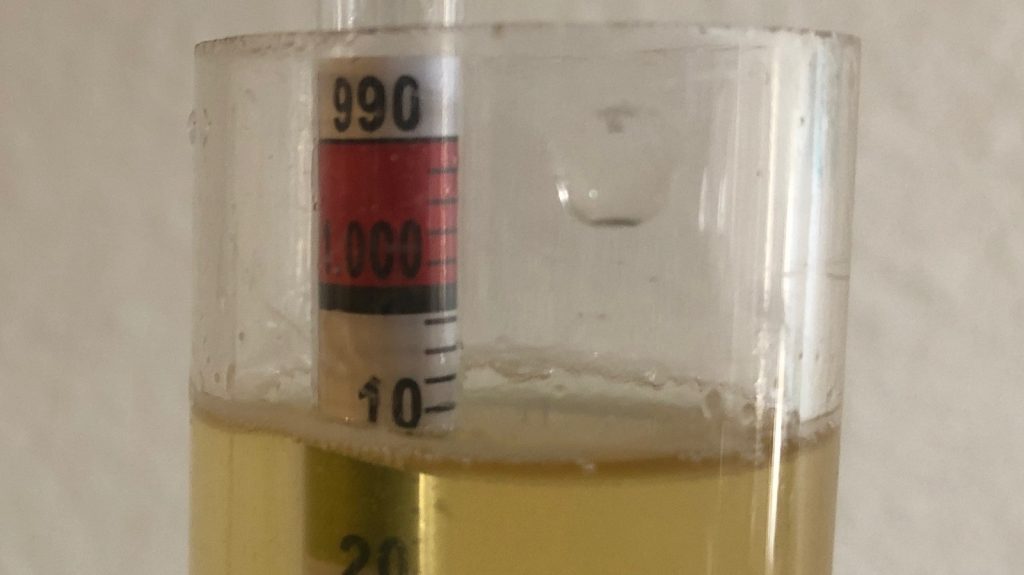
At this point, I racked the beer to a sanitized keg.
The filled keg was placed in my keezer, burst carbonated, and left to condition for a week before it was ready to drink.
| IMPRESSIONS |
Belgian ales are often associated with higher levels of fruity esters and spicy phenols, and while this is certainly the case in many such styles, Trappist Single tends to have a more restrained fermentation profile. One of my favorite examples of this style is Westvleteren Blond, a top-tier beer from a top-tier brewery.
Having brewed a few batches of Trappist Single inspired by those I had in Belgium, I thought it’d be fun to play around with less traditional ingredients and looked to Australian hops to give a unique spin on the style. I settled on Ella, which shares some characteristics with classic noble varieties, and the more pungently fruity Vic Secret, a pairing I felt would complement the Belgian fermentation characteristics.
As it turns out, Belgian Down Under was a definite success! The interplay of the Belgian yeast and the Australian hops created a noticeable passionfruit note that’s atypical for a traditional Trappist Single, though supported by pleasant spicy and herbal characteristics. While quite dry on the palate, I’ll likely swap out a portion of Pilsner malt for some simple sugar in future batches to make it a bit snappier. In the end, I really enjoyed this regional mash-up of a beer and look forward to making more!
If you have thoughts about this recipe or experience making something similar, please feel free to share in the comments section below!
Support Brülosophy In Style!
All designs are available in various colors and sizes on Amazon!
Follow Brülosophy on:
FACEBOOK | TWITTER | INSTAGRAM
If you enjoy this stuff and feel compelled to support Brulosophy.com, please check out the Support page for details on how you can very easily do so. Thanks!


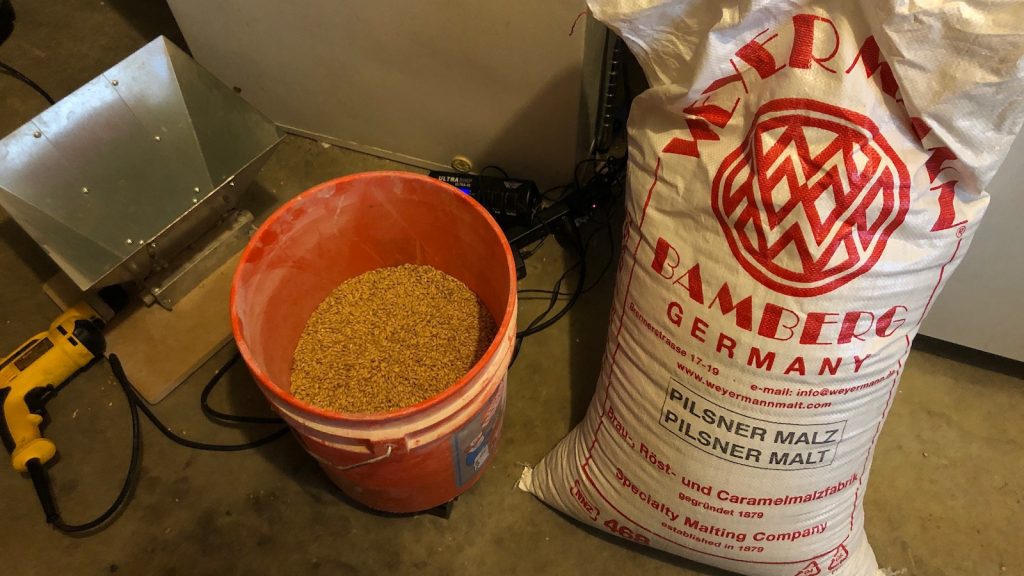
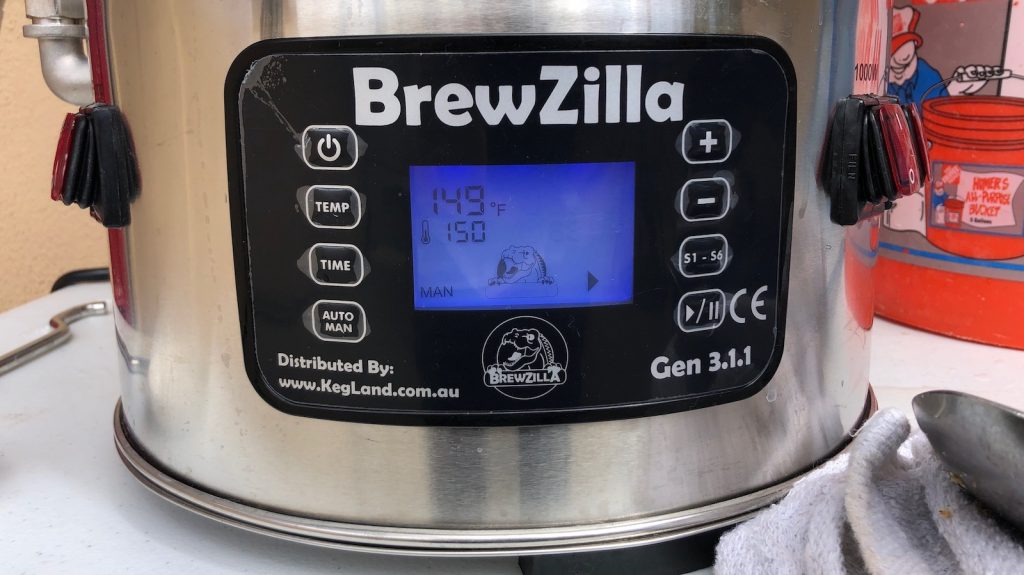
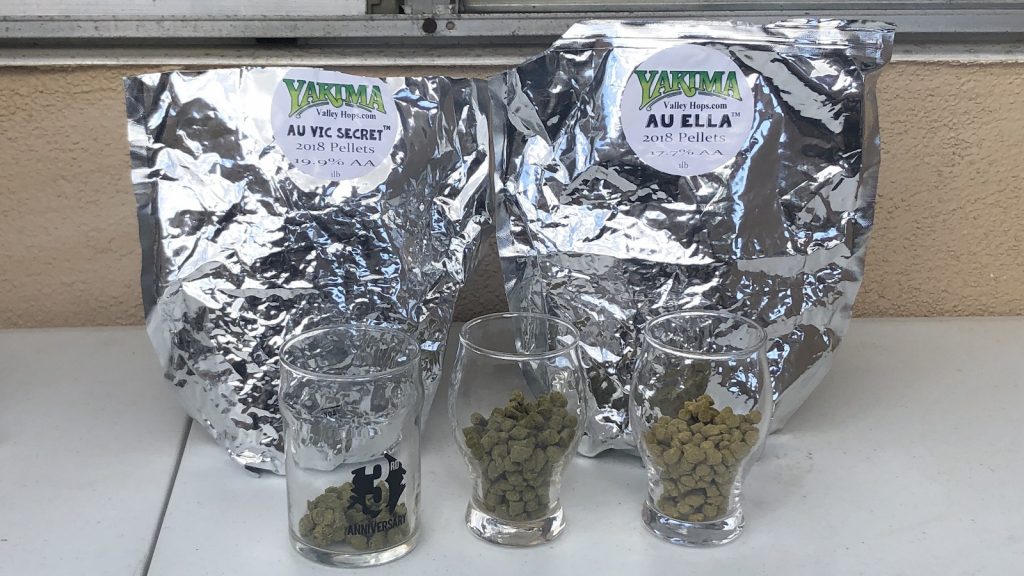
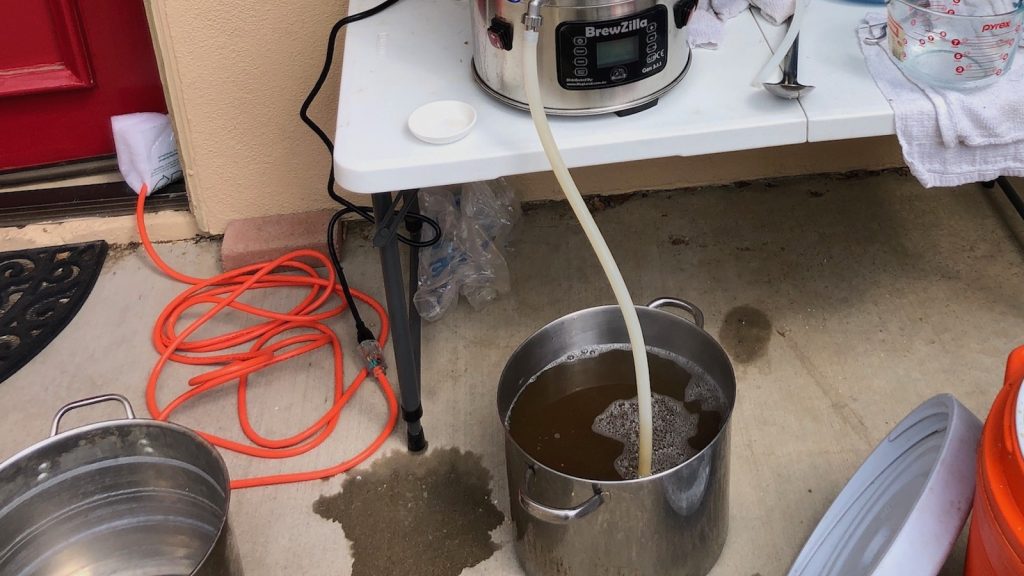

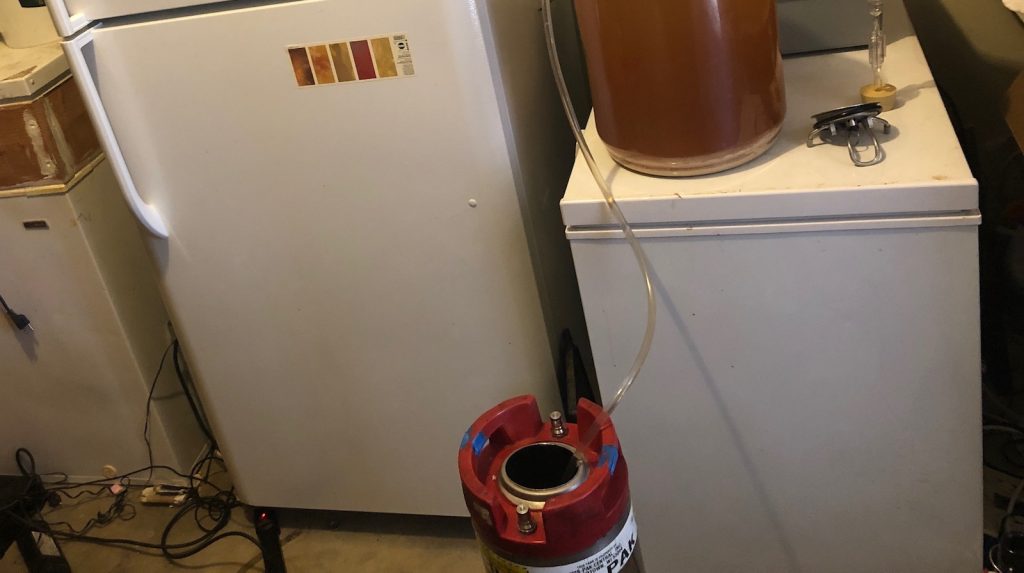
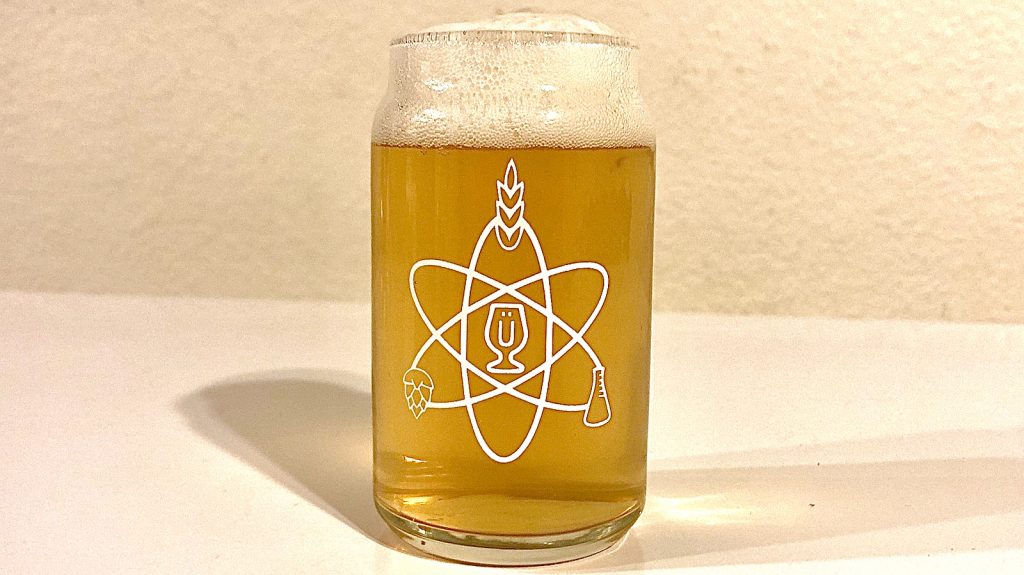











23 thoughts on “Brü It Yourself | Belgian Down Under”
Even in Belgium, the blond, single Trappist beers are difficult to find. They are mostly sold near or at the abbeys. The only exception is the Chimay Dorée.
How much, exactly, do you think you’d substitute? I’d love to know so I could brew it myself. Thanks!
I would start around 5% of the total OG and see how you like it. It might not have a statistical impact. The simpler route is raising the carbonation level; you might need to re-tool your keg system to handle the pressure, but bottle conditioning is also possible.
Any reason you didn’t sparge in the robobrew? Seeing the 1st running to a separate vessel was interesting to see. Is it for better volume managent? I expected to see the grain basket raised up. Just wondering is all. Great experiment by the way.
Great question! It is a combination of things. I am a long-term batch sparger; when I got these BrewZillas, I stuck with that. So, I always drain the first runnings into another vessel. Fly sparging would eliminate that, for sure, but you still need a 2nd vessel for heating that water. In the end, this process works for me, since I have to run exbeeriments as controlled as possible.
I have a robobrew and hated the grain basket. I would either get a stuck sparge or too many grains would get through so I threw the grain basket away and got a brew-in-a-bag bag and a hoist. With the tightest gap on my grain mill and a couple bag squeezes, I’m getting 73% efficiency doing full volume no-sparge mashing now and am much happier with the thing. I also throw in a hot rod heat stick to get to mash temp and again to get to a boil faster
I’m curious about other experience you may have with this yeast strain. You controlled fermentation temperature to a maximum of 72 deg without issue, yet I’ve heard repeatedly that this is a strain you have to let it rise much higher, even into the 80’s, lest it stalls out before finishing. Have you ever had stalling issues with this yeast?
I have not had a stall, but I have also not pushed the OG very high. I am considering higher OG tripel/belgian strong gold with this in the future!
Do you find it quicker chilling rrunning through the immersion chiller instead of putting it in the wort, and how much wort does you lose goingbthat way?
Good question. I opted to run the wort through the chiller, rather than water through the chiller, since I did not have the proper fittings to attach my garden hose to the chiller. I always brew more wort than I need to ferment, so some liquid/trub will always be left in the kettle. There is also some in the chiller, but its accounted for in recipe design.
I run a Robobrew, I still use the grain basket but I put a grain bag inside the basket( works best if you lower the basket with the bag tightened around the top first. Then only use the filter at the bottom with the bigger holes. Chuck a handful of oat hulls in before your grain and you won’t get a stuck sparge. Works very well,my brews are clean as since using the grain bag.
I have brewed a Patersbier several times and really enjoy the style. OG 1.040, FG 1.004, IBU 16, 4.7%. (Keg). Pilsner malt 97%, Acidulated malt 3%. Magnum 10% 10 grams FWH, Hall. Mittlefruh 3.8% 27 grams last 5 minutes (this was for 30 L end of boil batch). Mashed at 66oC. I have used WLP500 (a great starter for big Belgian beers), MJ Belgian Ale etc. Style suits many liquid and dry Belgian yeasts. A great summer beer with character and you can drink more than one without falling over.
Hi there is a pale ale in Australia made by Grifter brewing which uses Ella hops (i believe) and has a remarkable similarity to other belgian styles I have tried. I am glad I stumbled across this and look forward to experimenting!
Hey Andy, Are you Australian?
No, I am from the US; originally from Illinois and live in California now.
Question about the RoboBrew – how would it work for smaller than five gallon batches? I’m not much interested in making five gallons of a beer at a time – ends up being more than we can drink or give away (yes, we need more friends). I’m looking to do 2.5 to three gallon batches. Also curious about the durability – seems one other comparably priced system continues to be plagued by various quality problems and while the customer service is reportedly excellent, it doesn’t seem sustainable for the seller and hardly convenient for the user.
Hi Larry, we just posted a review (https://brulosophy.com/2020/06/11/brewzilla-robobrew-120v-electric-brewing-system-with-pump-product-review/). To answer your question, you can definitely do smaller batches. The kettle markings do not go below ~ 3 gallons, but that is a minor issue. I would suggest doing full water volume mashes and adjust efficiency down to account for no sparging. That will definitely speed up your day. If you are using a hop spider, you may need to play with how it sits in the kettle to ensure hop submersion. Last, depending on how you remove the wort from the kettle, the ball valve its a bit higher than the pump inlet; therefore, the ball valve will leave some wort behind, which may impact smaller batches.
While I have only had these for a few months, I think the build quality is well thought out and strong. From the manufacturer’s social media, they seem responsive to issues and have a bunch of other cool homebrewing products.
Thank you for the prompt reply – much appreciated. Understood about the ball valve and possibly losing a bit of wort – makes sense. I’d measure everything external to the kettle anyway, so the markings won’t matter much. But you know, with all the modifications I read about people making to these systems – one that I would do would be to swap that ball valve for a sanitary valve. I’m an engineer in a food and beverage company – we don’t like ball valves in process piping because you can’t clean/sanitize them in place – I’ve been brainwashed… But I have taken hundreds of them apart over 40 years in the biz and they absolutely do capture liquid behind the “ball” and that liquid becomes microbial soup that is a contamination risk.
Totally. I am eventually putting a 3-piece ball valve on these. Your comment about finding liquid in them reminded me of this classic post : https://brulosophy.com/2014/11/13/problem-identification-or-helping-a-buddy-stay-in-the-hobby/
I love Belgian beers and have tried my fair share of beers from Belgium. Another aspect of a Belgian beer that people tend to forget is the high c02 level beside the fruity esters and spicy phenols. Thank you for this article. Cheers!
Absolutely Damon. It is one of my favorite aspects of Duvel: insane carbonation and bottle conditioning. And the Triple Hop series certianly influenced this beer!
There’s a great version of this style here in Houston by Eureka Heights called Neon Moon. Pilsner malt with Anzac a hops
Azacca*!